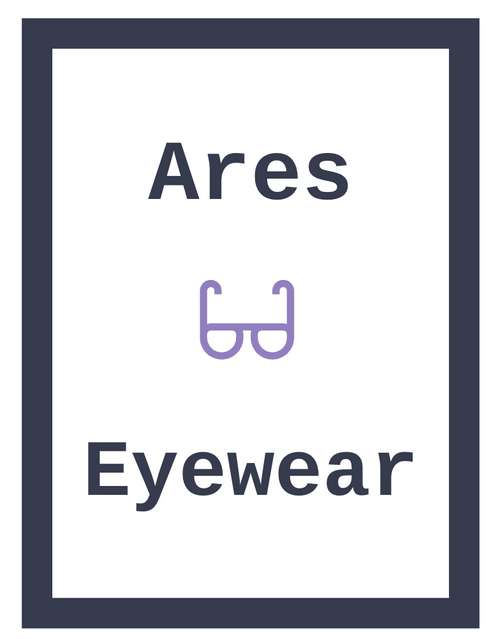Astigmatism is a common vision problem that affects millions of people worldwide. Despite its prevalence, many individuals may not fully understand what astigmatism is or how it can impact their vision. In this article, we'll delve into the intricacies of astigmatism, exploring its causes, symptoms, and available treatment options.
Definition and Causes
Astigmatism occurs when the cornea or lens of the eye has an irregular curvature, leading to blurred or distorted vision.

This irregularity can result from various factors, including genetics, eye injuries, or certain medical conditions.
Symptoms
Symptoms of astigmatism can vary but often include blurred or distorted vision, eye strain, headaches, and difficulty with night vision.

Unlike other vision problems like nearsightedness or farsightedness, astigmatism can cause both near and distance vision to appear blurry.
Diagnosis: Diagnosing astigmatism typically involves a comprehensive eye exam conducted by an optometrist or ophthalmologist.
This exam may include visual acuity tests, keratometry (to measure the curvature of the cornea), and refraction tests to determine the appropriate prescription for corrective lenses.
Types of Astigmatism:
Astigmatism manifests in various forms, each characterized by the specific irregularities in the curvature of the cornea or lens. Understanding these different types of astigmatism is essential for determining the most appropriate treatment approach. Here are the primary types:
-
Regular Astigmatism:
- Regular astigmatism is the most common type and occurs when the cornea or lens has a uniform curvature in one meridian (axis) and a different curvature in the perpendicular meridian. This results in two distinct focal points, causing blurred vision at various distances.
-
Irregular Astigmatism:
- Unlike regular astigmatism, irregular astigmatism involves uneven curvature across the cornea or lens, leading to multiple focal points and more severe visual distortion. Irregular astigmatism can result from corneal scarring, keratoconus (a progressive thinning of the cornea), or surgical complications.
-
Corneal Astigmatism:
- Corneal astigmatism refers to irregularities in the curvature of the cornea, which is the transparent front surface of the eye. These irregularities can occur due to asymmetrical corneal shape or corneal injuries. Corneal astigmatism is typically easier to correct than lenticular astigmatism.
-
Lenticular Astigmatism:
- Lenticular astigmatism arises from irregularities in the curvature of the lens inside the eye, rather than the cornea. This type of astigmatism may occur as a result of lens abnormalities, such as congenital malformations or cataracts (clouding of the lens).
-
Mixed Astigmatism:
- Mixed astigmatism occurs when one meridian of the eye is nearsighted (myopic) and the perpendicular meridian is farsighted (hyperopic), or vice versa. This combination of refractive errors can lead to complex visual symptoms, requiring careful assessment and treatment.
-
Compound Astigmatism:
- Compound astigmatism involves both meridians of the eye being either myopic or hyperopic, but with differing degrees of refractive error. This type of astigmatism requires precise correction to achieve optimal visual acuity.
Understanding the specific type of astigmatism is crucial for determining the most effective treatment strategy, whether it involves corrective lenses, refractive surgery, or other interventions. A comprehensive eye exam conducted by an eye care professional can accurately diagnose the type and severity of astigmatism, guiding personalized treatment recommendations.
Treatment Options: Fortunately, several treatment options are available for managing astigmatism. These include:
- Eyeglasses: Corrective lenses can compensate for the irregular curvature of the cornea or lens, providing clearer vision.

- Contact lenses: Specialized toric lenses are designed to correct astigmatism and are available in both soft and rigid gas-permeable varieties.

- Refractive surgery: Procedures such as LASIK or PRK can reshape the cornea to improve vision, reducing or eliminating the need for corrective lenses.

Living with Astigmatism
While astigmatism may require ongoing management, there are steps individuals can take to optimize their vision and eye health. These include practicing good eye care habits, scheduling regular eye exams, and making ergonomic adjustments for activities like computer use.
Conclusion
Astigmatism is a common vision problem that can significantly impact daily life if left untreated. By understanding the causes, symptoms, and treatment options for astigmatism, individuals can take proactive steps to preserve their vision and enhance their quality of life. If you suspect you have astigmatism or are experiencing vision problems, don't hesitate to consult with an eye care professional for personalized guidance and treatment.

